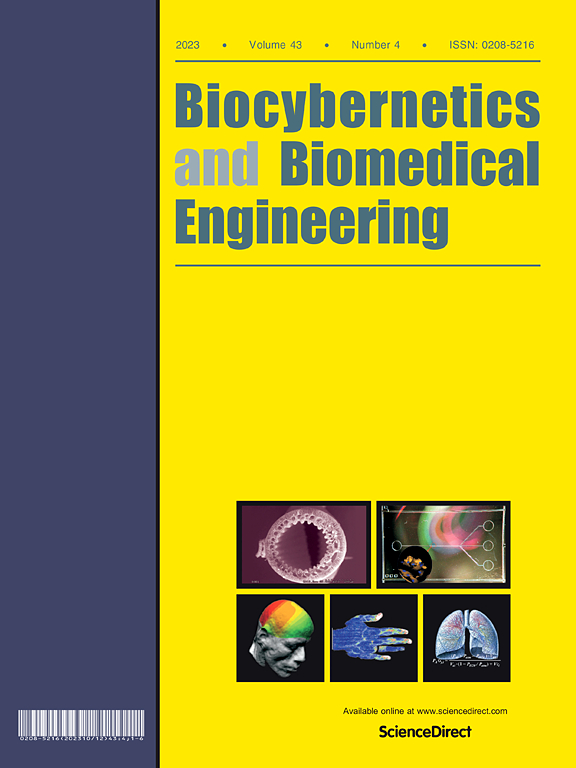伤口感染识别的人工智能模型及其与人类结果的比较
IF 6.6
2区 医学
Q1 ENGINEERING, BIOMEDICAL
引用次数: 0
摘要
仅仅根据照片来识别感染的伤口可能是一个挑战,这项工作的目的是开发一种机器学习模型来实现这一目标。我们选择了899张在PODOS伤口护理诊所(波兰华沙)拍摄的伤口照片。有445张照片显示未感染的伤口,而454张照片显示微生物检测呈阳性并接受抗生素治疗的感染伤口。通过随机选择代表42个未感染伤口和40个感染伤口的82张照片,创建了一个测试集。从剩下的照片中随机抽取154张作为验证集,剩下的663张构成训练集。最初,我们使用了来自第8代和第11代的5个预训练YOLO模型。第8代模型优于第11代模型,并与6名专家和6名护生的结果进行比较。事后分析显示,人工智能模型在平均平均精度(mAP)、准确性和F1分数方面都优于专家和学生,而专家和学生的结果没有显著差异。专科医师的mAP、F1评分和准确率中位数分别为74.1%、76.4%和74.4%。学生的中位数分别为68.4%、59.4%和67.7%;人工智能模型的中位数分别为92.7%、92.9%和92.7%。YOLOv8n模型的最高准确率为95.1%,显著高于最佳专家的84.1%。这些结果表明,人工智能可以显著帮助护理人员识别伤口感染,因此他们可以更快地采取适当的行动。本文章由计算机程序翻译,如有差异,请以英文原文为准。
Artificial intelligence models for wound infection recognition and their comparison with human results
Recognizing an infected wound based solely on a photograph can be a challenge and the aim of this work was to develop a machine learning model that would enable that. We selected 899 wound photographs taken at PODOS Wound Care Clinic (Warsaw, Poland). There were 445 photographs showing uninfected wounds, whereas 454 photographs showed infected wounds with positive microbiological test and antibiotic treatment. A test set was created by randomly selecting 82 photographs representing 42 uninfected and 40 infected wounds. From the remaining photographs, 154 were randomly selected for the validation set, and the remaining 663 formed the training set. Initially we used five pretrained YOLO models from generation 8 and five from generation 11. The 8th generation models performed better than 11th generation models and were then compared with the results of 6 experts and 6 nursing students. The post-hoc analysis revealed that AI models outperformed both specialists and students in terms of mean averaged precision (mAP), accuracy and F1 score, while the results of specialists and students did not differ significantly. For specialists, the medians of mAP, F1 score, and accuracy were 74.1 %, 76.4 %, and 74.4 %, respectively. For Students the medians were 68.4 %, 59.4 %, and 67.7 %, respectively; and for AI models the medians were 92.7 %, 92.9 %, and 92.7 %, respectively. The highest accuracy of 95.1 % of YOLOv8n model was significantly higher than the best specialist’s result of 84.1 %. These results suggest that artificial intelligence can significantly help caregivers recognize wound infection, so they can take appropriate action more quickly.
求助全文
通过发布文献求助,成功后即可免费获取论文全文。
去求助
来源期刊

Biocybernetics and Biomedical Engineering
ENGINEERING, BIOMEDICAL-
CiteScore
16.50
自引率
6.20%
发文量
77
审稿时长
38 days
期刊介绍:
Biocybernetics and Biomedical Engineering is a quarterly journal, founded in 1981, devoted to publishing the results of original, innovative and creative research investigations in the field of Biocybernetics and biomedical engineering, which bridges mathematical, physical, chemical and engineering methods and technology to analyse physiological processes in living organisms as well as to develop methods, devices and systems used in biology and medicine, mainly in medical diagnosis, monitoring systems and therapy. The Journal''s mission is to advance scientific discovery into new or improved standards of care, and promotion a wide-ranging exchange between science and its application to humans.
 求助内容:
求助内容: 应助结果提醒方式:
应助结果提醒方式:


